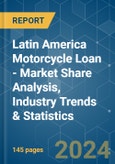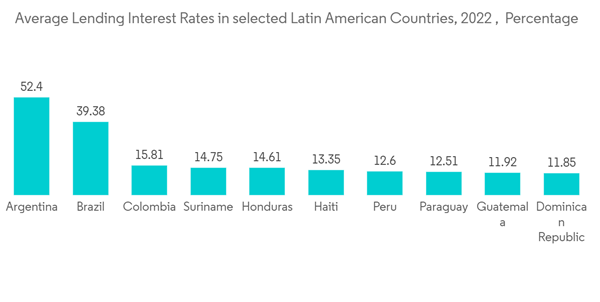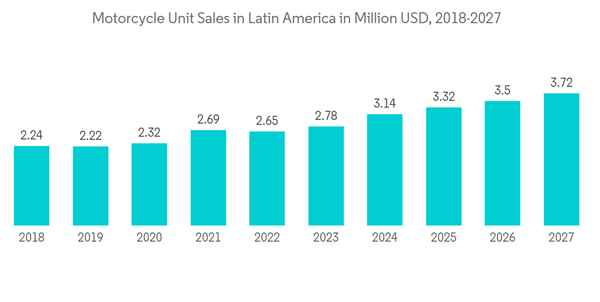In recent years, there is an expansion in the availability of financing options for motorcycles in Latin America. Banks, specialized lenders, and captive financing arms of motorcycle manufacturers are actively offering loan products to meet the growing demand. It increased access to financing and contributed to motorcycle sales growth in the region. In certain countries in Latin America, governments implemented programs to promote motorcycle usage and support the industry. These programs may include incentives such as tax breaks, subsidies, or favorable regulations. Government support can positively impact the motorcycle loan market by stimulating demand and encouraging more individuals to purchase motorcycles.
The pandemic caused a decline in motorcycle sales across Latin America. Lockdown measures, restrictions on mobility, and economic uncertainty decreased consumer demand for motorcycles. This decline in sales directly affected the demand for motorcycle loans, as fewer individuals are seeking financing for their purchases.
Latin America Motorcycle Loan Market Trends
Interest Rate Impact on Motorcycle Loan Market
The interest rate directly affects the affordability of motorcycle loans. Higher interest rates result in higher monthly payments for borrowers, which can make the loans less affordable for potential buyers. As interest rates increase, some individuals may delay or forgo purchasing a motorcycle, reducing the demand for loans. Interest rates also play a role in determining loan eligibility. Higher interest rates may result in stricter lending criteria, making it more difficult for individuals with lower credit scores or limited income to qualify for motorcycle loans. It can limit the pool of potential borrowers and impact the overall loan demand. Lower interest rates can make lenders more competitive in the market. Lenders offering lower rates can attract more borrowers and gain a larger market share. It can lead to increased competition among lenders, potentially driving down interest rates and making loans more attractive to consumers.Increasing Motorcycle Unit Sales impact on Loan Market in Latin America
As motorcycle unit sales rise, there is a higher demand for financing options to facilitate these purchases. More individuals may seek motorcycle loans to afford their desired motorcycles, especially if they cannot make upfront payments. The growing sales volume can lead to increased loan applications and loan origination. Increasing motorcycle unit sales can encourage collaboration between motorcycle manufacturers, dealerships, and lenders. Manufacturers and dealerships can work closely with lenders to provide attractive financing offers, such as low-interest rates, flexible repayment terms, and promotional deals. Such collaborations can boost loan uptake and contribute to the overall growth of the motorcycle loan market. Increasing motorcycle unit sales allows lenders to diversify their loan portfolios. Lenders can reduce reliance on other loan types and mitigate risk by expanding their offerings to motorcycle loans. Diversification allows lenders to tap into the growing motorcycle market and potentially achieve higher returns on their loan portfolios.Latin America Motorcycle Loan Industry Overview
The competitive landscape in the Latin America motorcycle loan market is dynamic and includes various financial institutions, both traditional banks and non-banking entities. Latin American motorcycle loan market lenders offer competitive interest rates to attract borrowers. The interest rates may vary depending on borrower creditworthiness, loan duration, and market conditions. Competitive rates make motorcycle loans more affordable and encourage consumers to finance their purchases rather than paying upfront. Some lenders in Latin America offer specialized loan programs tailored to the motorcycle market. These programs may include flexible repayment terms, low or zero-down payment options, and customized loan structures. Such specialized programs cater to the region's specific needs and preferences of motorcycle buyers. The following are some key players in the competitive landscape: Banco Santander, Banco Bradesco, Banco do Brasil, Scotiabank, and CitiBanamex.Additional Benefits:
- The market estimate (ME) sheet in Excel format
- 3 months of analyst support
This product will be delivered within 2 business days.
Table of Contents
Methodology

LOADING...










